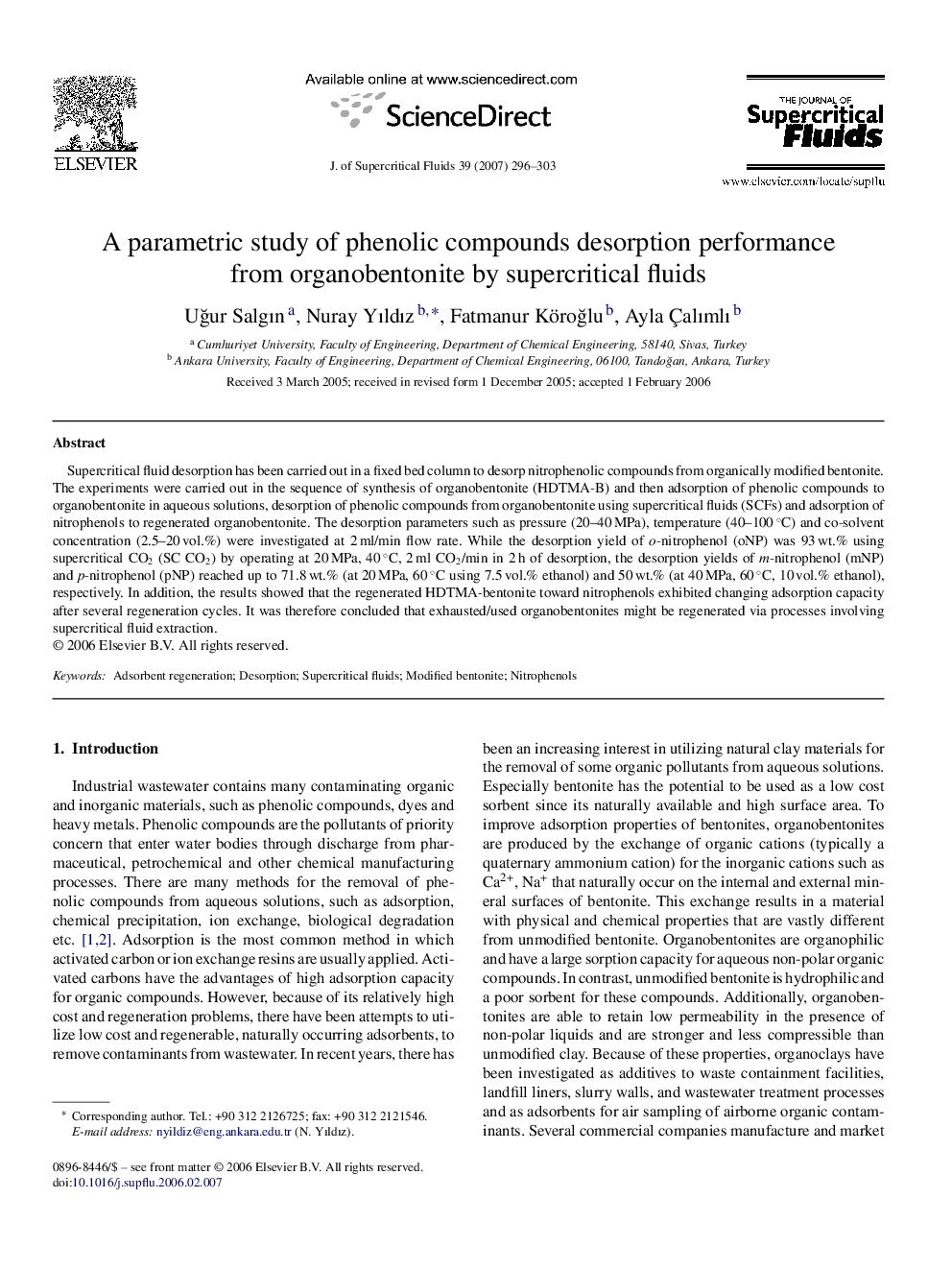| Article ID | Journal | Published Year | Pages | File Type |
|---|---|---|---|---|
| 232128 | The Journal of Supercritical Fluids | 2007 | 8 Pages |
Supercritical fluid desorption has been carried out in a fixed bed column to desorp nitrophenolic compounds from organically modified bentonite. The experiments were carried out in the sequence of synthesis of organobentonite (HDTMA-B) and then adsorption of phenolic compounds to organobentonite in aqueous solutions, desorption of phenolic compounds from organobentonite using supercritical fluids (SCFs) and adsorption of nitrophenols to regenerated organobentonite. The desorption parameters such as pressure (20–40 MPa), temperature (40–100 °C) and co-solvent concentration (2.5–20 vol.%) were investigated at 2 ml/min flow rate. While the desorption yield of o-nitrophenol (oNP) was 93 wt.% using supercritical CO2 (SC CO2) by operating at 20 MPa, 40 °C, 2 ml CO2/min in 2 h of desorption, the desorption yields of m-nitrophenol (mNP) and p-nitrophenol (pNP) reached up to 71.8 wt.% (at 20 MPa, 60 °C using 7.5 vol.% ethanol) and 50 wt.% (at 40 MPa, 60 °C, 10 vol.% ethanol), respectively. In addition, the results showed that the regenerated HDTMA-bentonite toward nitrophenols exhibited changing adsorption capacity after several regeneration cycles. It was therefore concluded that exhausted/used organobentonites might be regenerated via processes involving supercritical fluid extraction.
